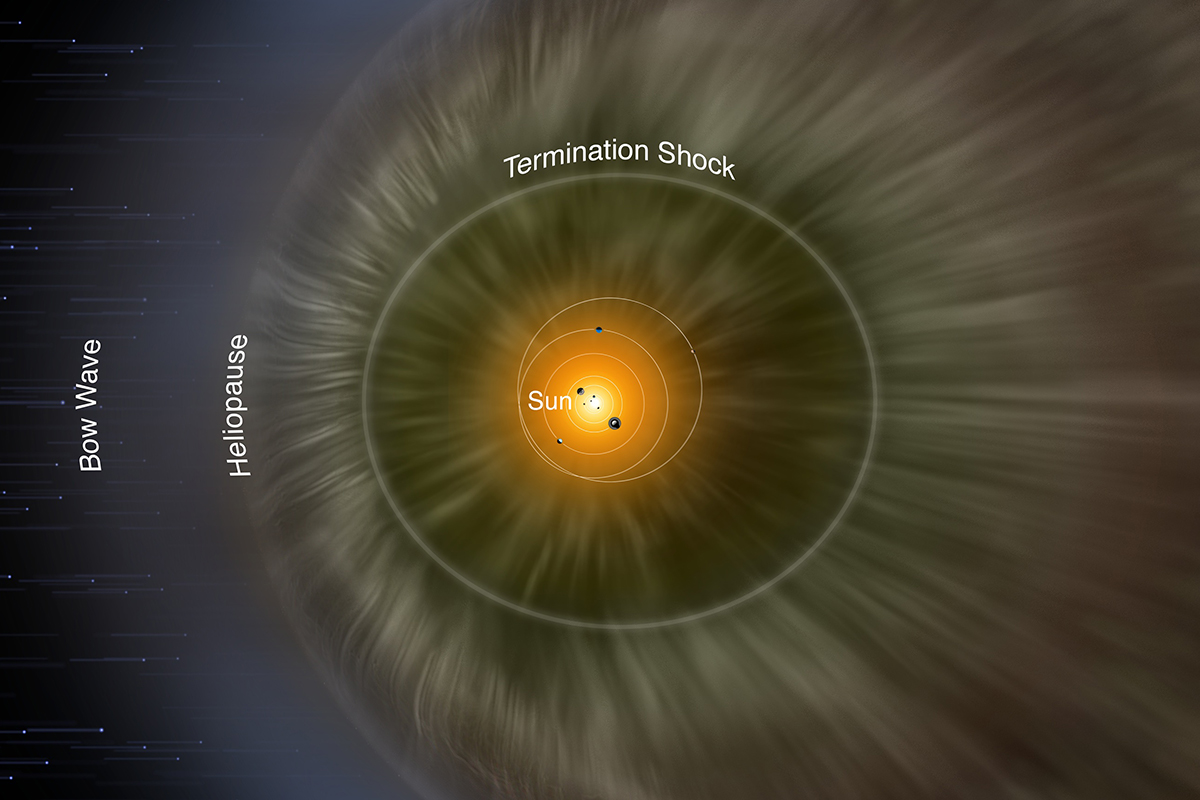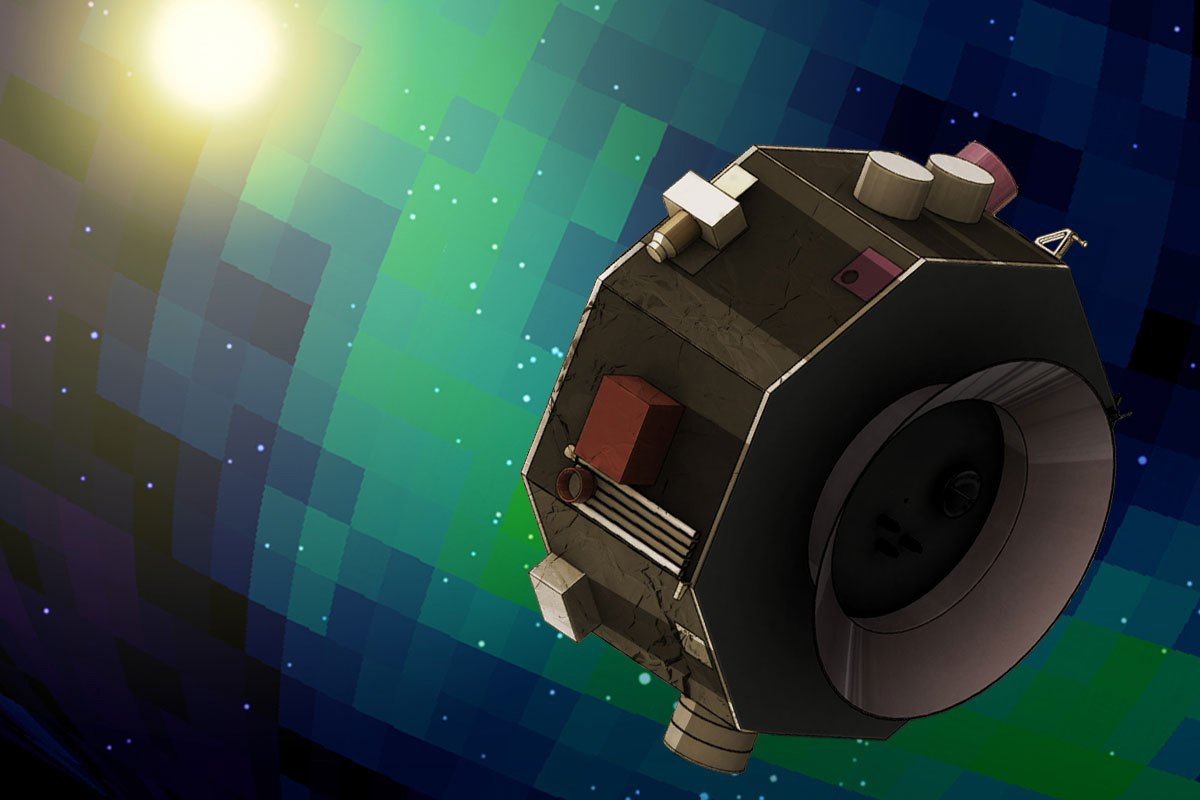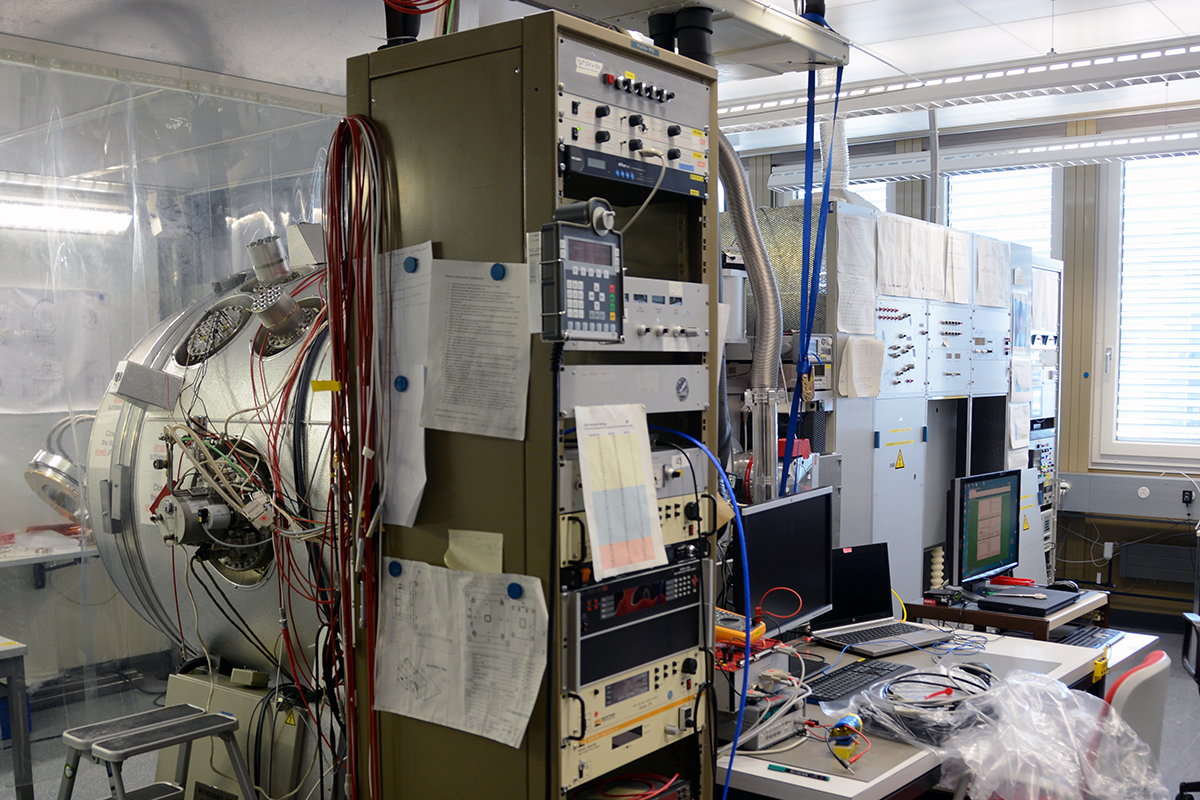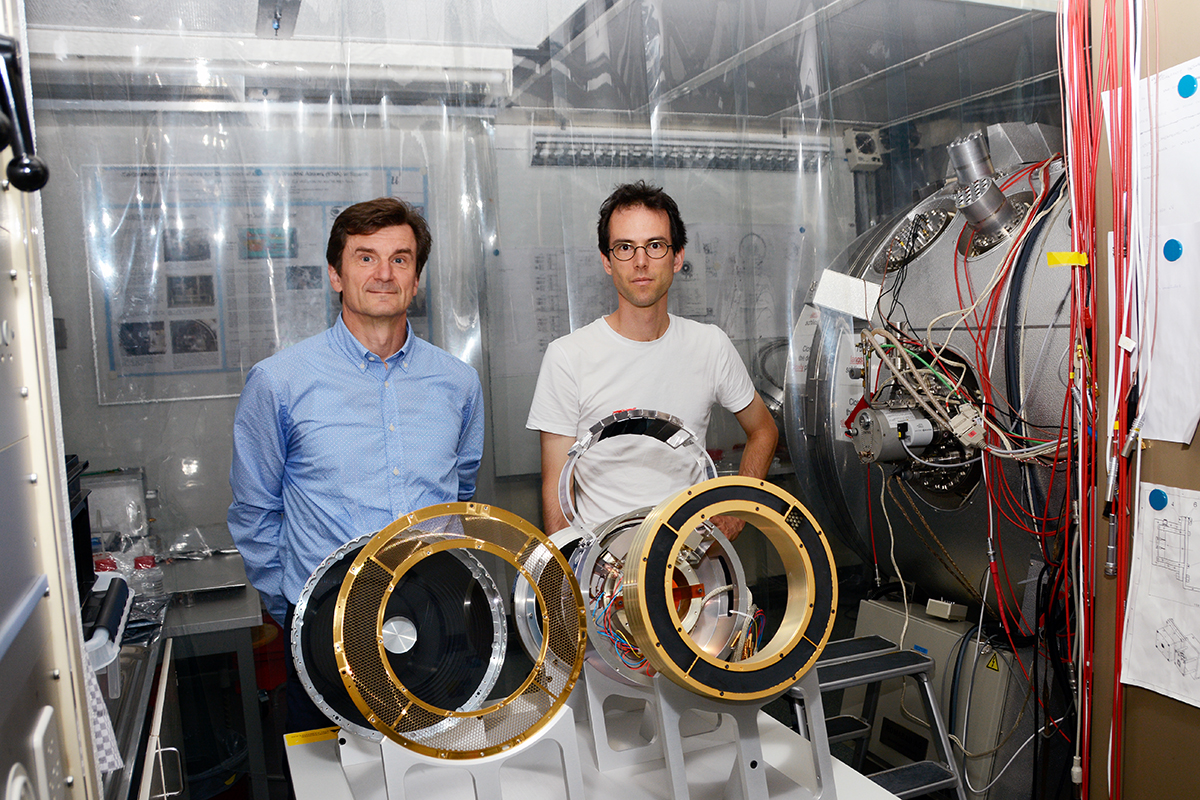“Like looking into the distance with a telescope”
NASA is seeking to look beyond the limits of our solar system with a new space probe from 2024 – and the University of Bern is helping to build the Interstellar Mapping and Acceleration Probe (IMAP). For Peter Wurz and André Galli from the Space Research & Planetary Sciences Division, missions like this are never routine.
uniaktuell: What exactly does NASA want to find out with IMAP?
André Galli: The mission is to explore the heliosphere. What is the heliosphere? This is what we call the entire region surrounding the sun, which is defined by the solar wind. The Earth and all the major planets are located in this region. The solar wind consists of charged particles with a magnetic field that stream away from the sun at about 400 kilometers per second. Then there is a boundary layer where the solar wind hits interstellar space beyond the solar system. This boundary layer has an impact on us on Earth.

Peter Wurz: Interstellar space also contains high-energy particles. This cosmic radiation is fundamentally dangerous to life. Life as we know it is not possible out there. The heliosphere acts as a kind of shield for us on Earth.
André Galli: We want to find out what happens at this boundary layer between interstellar space and the region defined by the solar wind. How many interstellar particles make it through the boundary layer? What does interstellar space beyond the boundary layer look like? What is its chemical composition, and how large is the magnetic field?
How are you going to do that?
André Galli: IMAP will be positioned around 1.5 million kilometers from Earth in the direction of the sun. Measuring devices on board the probe will then measure particles coming from the boundary layer.
Peter Wurz: It’s like looking into the distance with a telescope. A telescope uses distant photons. IMAP uses spectrometers to identify particle energy and particle type. It will also tell us the direction the particles are coming from. Put all this information together and you can ultimately draw an astronomical chart that tells you something about the origin of the particles. We can therefore map the boundary layer and indeed also look beyond it with this imaging method.

Wouldn’t it be more accurate if you took the measurements in the boundary layer itself?
André Galli: Sending a probe there would simply take too long. NASA’s Voyager 1 and 2 spacecraft are currently in the region of the boundary layer. They launched in 1977. It takes half a century to get out into interstellar space.
Peter Wurz: IMAP will only take three months to get into position. Six months after that, we will have the first chart.
How is the University of Bern’s Space Research and Planetary Sciences Division contributing to IMAP?
André Galli: There are ten different instruments involved in the IMAP mission. The key equipment is three cameras for measuring particles in three different energy ranges. We are working on IMAP-Lo, the camera for the low-energy range. Specifically, we are producing special surfaces that ionize the particles in such a way that they are identifiable in the detector. We are one of the few European institutions in the entire consortium contributing hardware to the mission.
Peter Wurz: One important element we are contributing is optical design. And finally, the instrument is also to be calibrated for flight at the University of Bern. Calibration ensures that the data can actually be meaningfully evaluated.

Why was the University of Bern selected for the IMAP mission?
Peter Wurz: NASA’s selection process for missions like this is a kind of bidding competition.
André Galli: Yes, and IMAP is being built by a large consortium of which the University of Bern is a member. It is standard practice for large consortia to be formed in the run-up to calls for tenders and apply jointly for the mission. No institute in the world can build all the instruments at the same time.
Peter Wurz: That is why we applied as part of a group, which was then selected by a jury. I’m sure the fact that the University of Bern had already made a valuable contribution to IBEX, the predecessor to IMAP, played a part here. IBEX – and I say this with all modesty – worked very well and is still providing reliable data. We have developed special detection technology, and we also have a calibration facility that is unique in the world.

The mission is scheduled to launch in 2024. What is the timetable up to then?
André Galli: So far, 2024 is the only date that we have in black and white – and it is a pretty ambitious one. It means that we have to have a prototype of our instrument by 2020. Actual construction of the instruments will follow between 2020 and 2022. What we call integration then starts in 2022. Integration means assembling the individual instruments into a probe and testing them again. The launch is scheduled for 2024. This tight timetable is only possible because we already have a good predecessor and know how we are going to approach the project.
Are there potential stumbling blocks?
Peter Wurz: Missions like this are never routine. Our experience is that something always goes wrong at some point. When it does, you sit down together and ask: How do we solve this? That moment always happens, and so far we have always managed to get through it.
André Galli: An enterprise like this consists of many parts and many people. If there’s a hitch somewhere, it has a domino effect. Building a space instrument is highly complex and there are sometimes delays.
What are you looking forward to most?
Peter Wurz: To calibration, certainly. It is always a great reward for years of work when you see how the instrument operates. And, of course, to the moment we get the first chart. On the IBEX project, we had an idea of what we would see. And yet the chart looked very different than expected. It’s very exciting when you discover things that you hadn’t anticipated. Those are the best moments.
About Peter Wurz and André Galli
Prof. Dr. Peter Wurz is a professor at the Physics Institute of the University of Bern and heads the Space Research and Planetary Sciences Division (WP). PD Dr. André Galli lectures (as a Privatdozent) at the Space Research and Planetary Sciences Division (WP). They are co-investigators and both part of the IMAP scientific team.
PHYSICS INSTITUTE, SPACE RESEARCH AND PLANETARY SCIENCES (WP)
The Space Research and Planetary Sciences Division researches the origin, history, and development of the solar system. We study our own solar system with its small bodies (comets and asteroids), its planets, and their atmospheres, and recently discovered planets that orbit other stars (the exoplanets) in order to understand the physical processes underlying the formation and development of planetary bodies. These questions are explored using direct measurements, remote sensing, laboratory tests, and numerical models. Analyses also investigate how the sun interacts with the magnetospheres and atmospheres of the planets and comets.
Learn more about the Space Research and Planetary Sciences Division
Learn more about NASA's Interstellar Mapping and Acceleration Probe» (IMAP)
ABOUT THE AUTHOR
Ivo Schmucki is an editor with the Media Relations and Corporate Publishing Unit at the University of Bern’s Communication and Marketing Office. He is responsible for “Nature and Matter”.